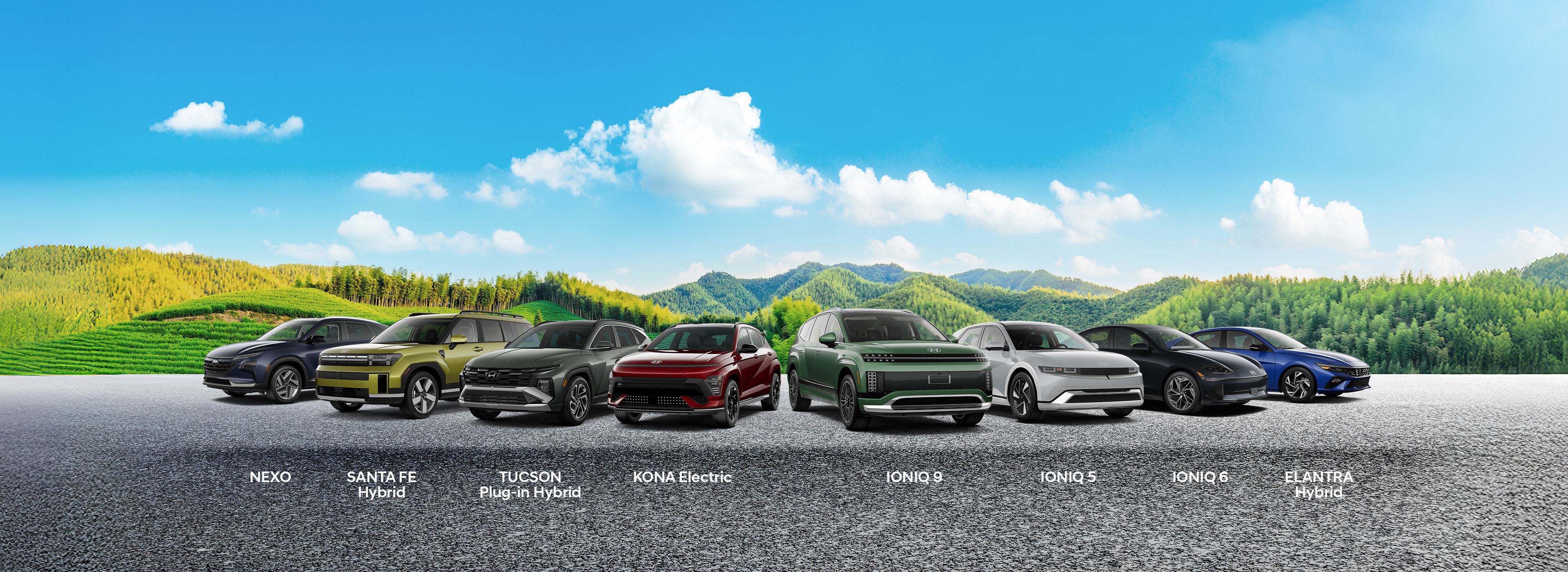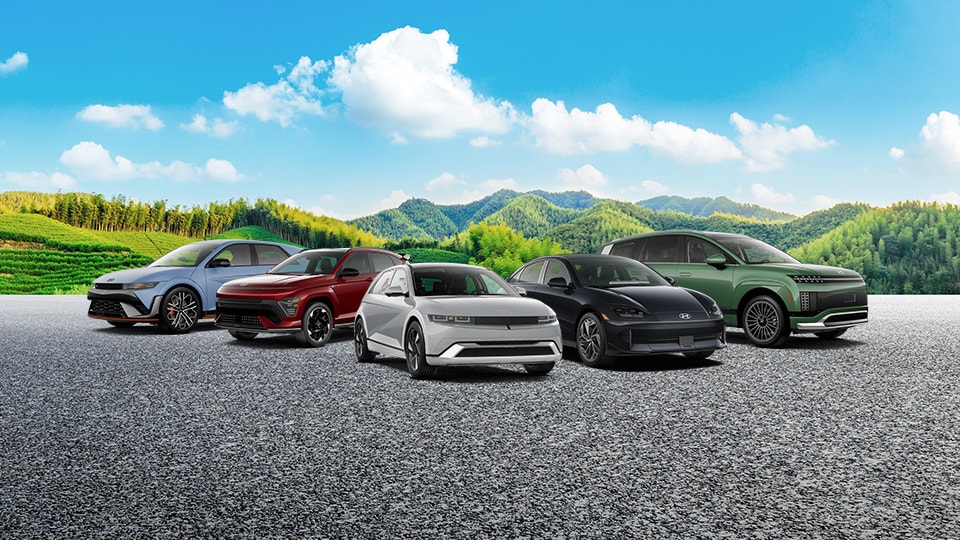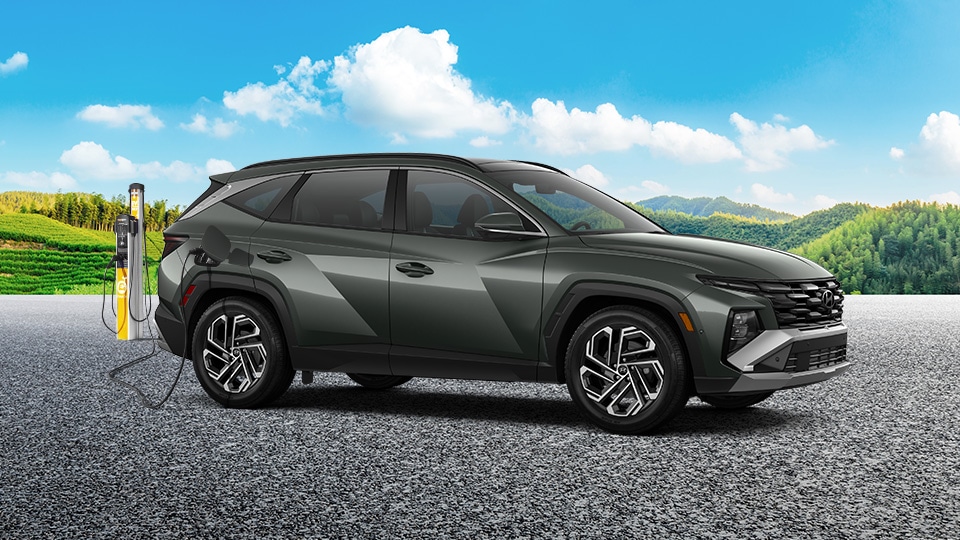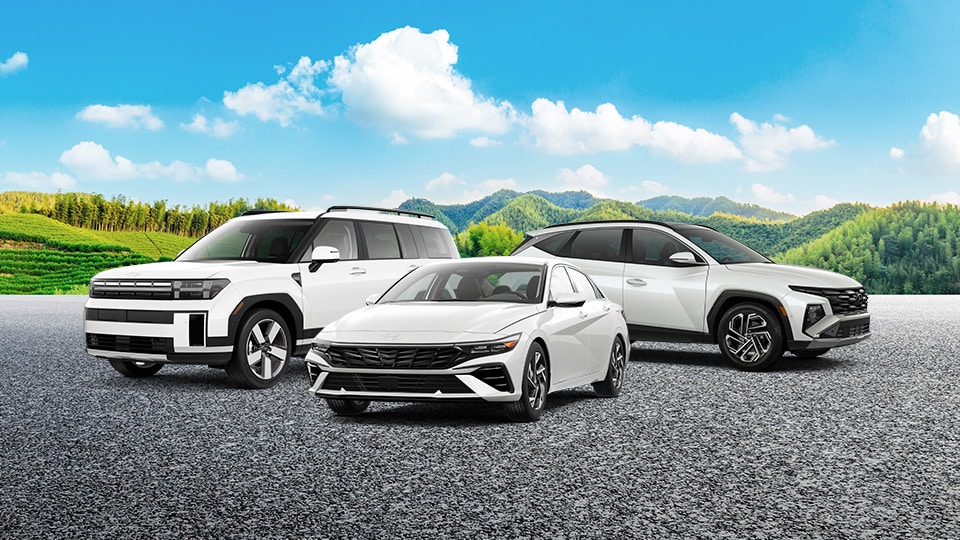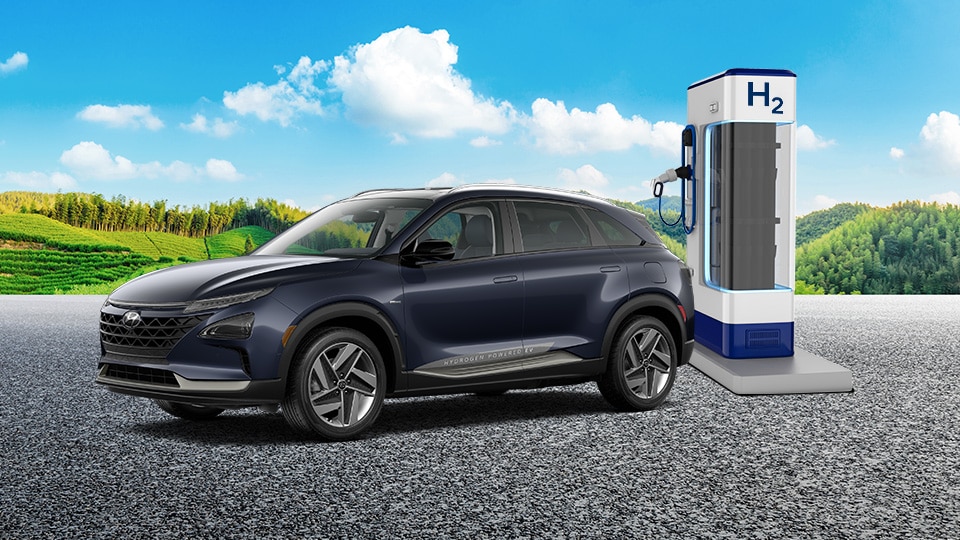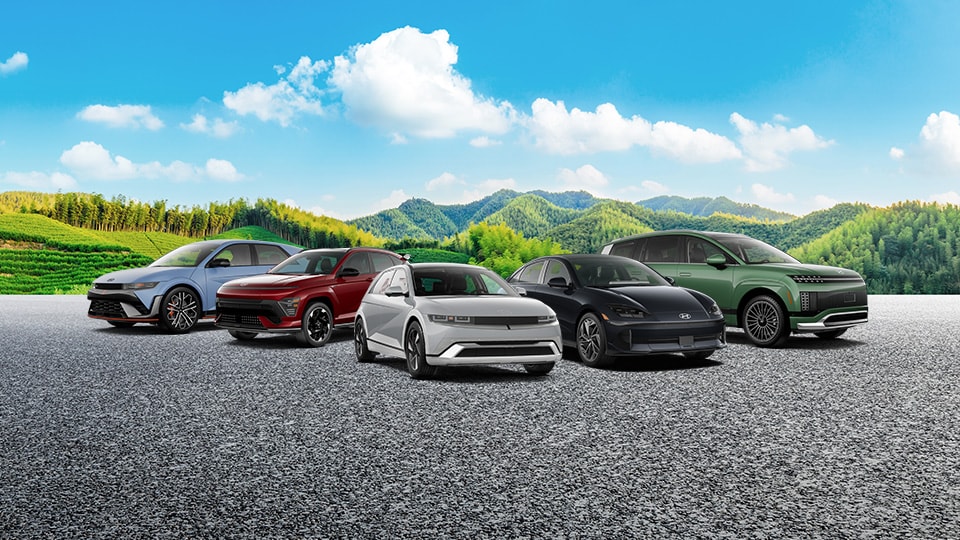The future is electric
Canada’s most awarded fully electric vehicle line-up*
The electric motors provide lightning quick acceleration and impressive performance, while also extending the driving experience through regenerative braking. Explore
The highest levels of Hybrid Technology
Our plug-in hybrid models take you further than you ever thought possible, with a larger battery than a traditional hybrid, which can be plugged in for charging and is capable of travelling a certain distance on electric power alone. When the electric-only range is depleted, the vehicle will revert to operate like the traditional hybrid. That way your Hyundai gets you there, going farther with the use of both fuel sources. Explore
Get the most out of using less
In Hybrids, a gas engine and electric motor is used separately or together, depending on driving conditions. Get outstanding fuel efficiency without needing to plug into an outlet, because the motor’s battery recharges through the engine, as well as through the regenerative braking system.Explore
The new elements of Fuel Cell
Hyundai is the first automotive manufacturer to make a hydrogen Fuel Cell Electric Vehicle available to the Canadian public. Showing our dedication to sustainable motoring technology without compromise, offering an SUV that can travel up to 612 kilometres** and emit nothing more than water and purified air. ExploreElectrified Vehicle Quiz
Find the perfect Hyundai electric vehicle based on your driving lifestyle, routine, road trips, charging needs, and vehicle size. Discover the nearest charging stations, exclusive benefits for electric vehicle owners, and Hyundai's warranties and services.
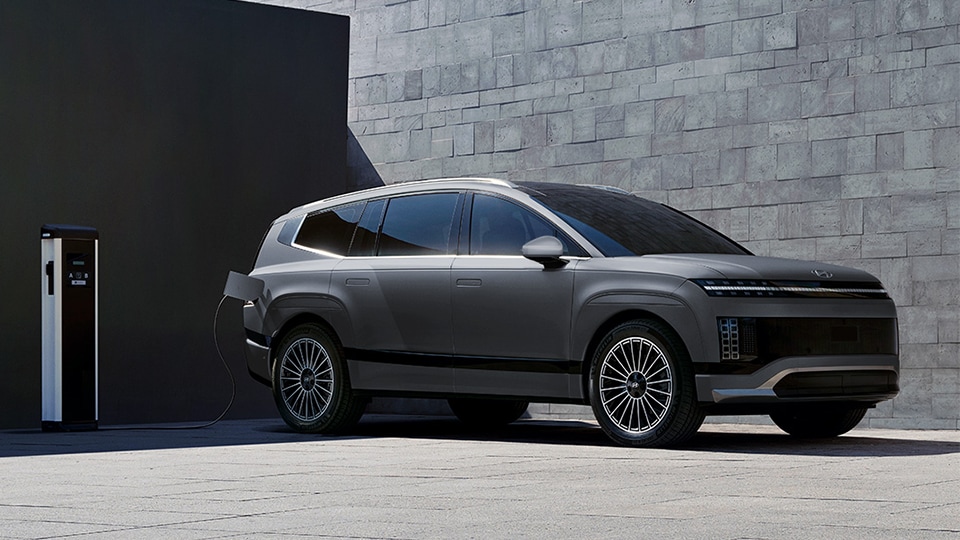
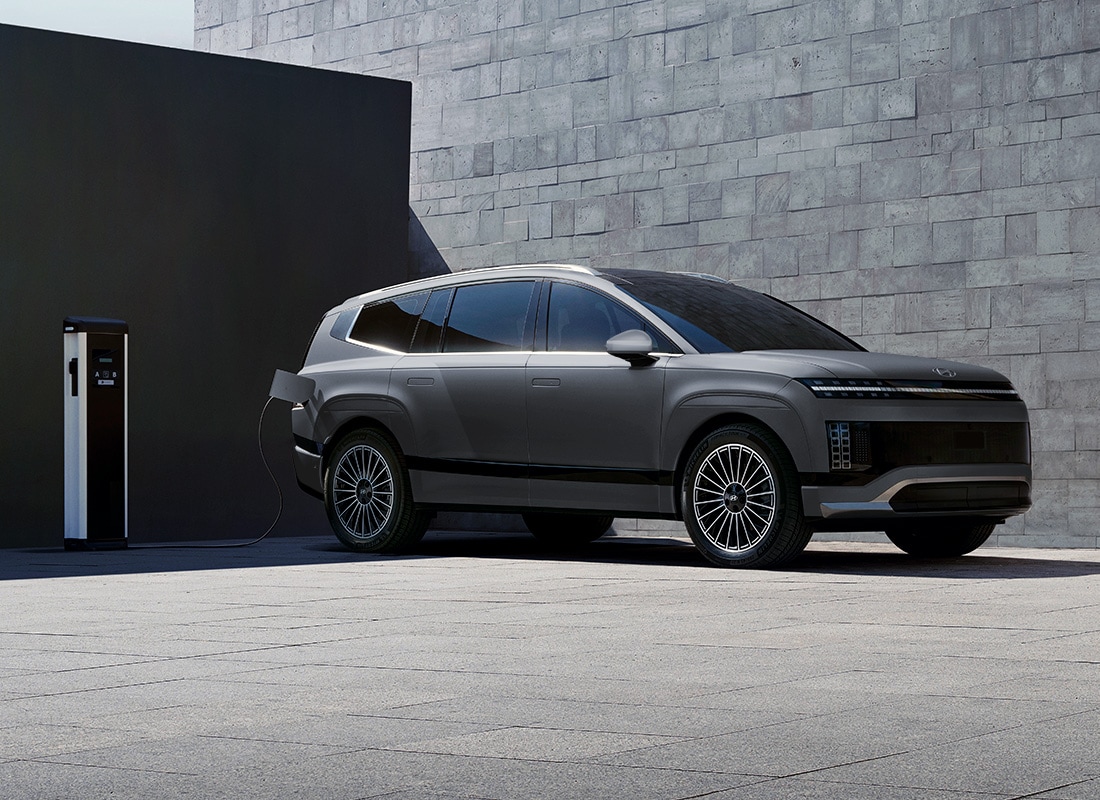
The first-ever all-electric IONIQ 9.
Meet the first-ever IONIQ 9, our three-row, fully electric, family SUV. With up to 7-passenger seating and an adult-sized third row, this vehicle has all the room and all the range to keep you going.
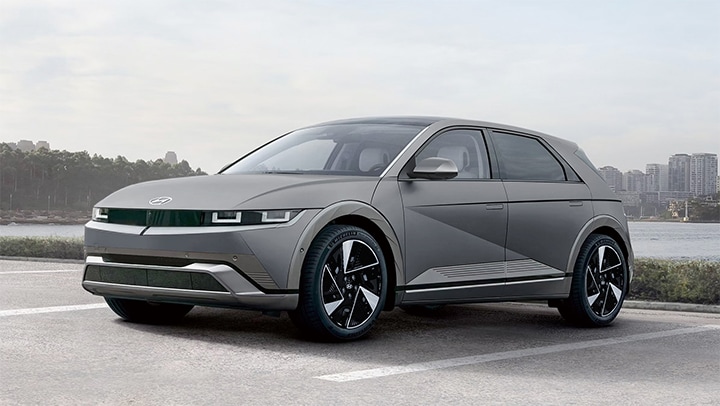
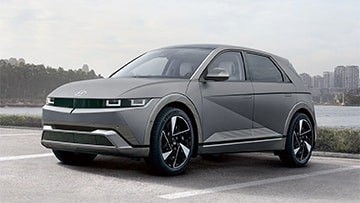
Charge your Hyundai at home.
In partnership with Chargehub, Hyundai offers a range of home charging stations that are portable, lightweight, and adapted to Canadian winters. Compare various charging stations, as well as information on the estimated range and charging times for different Hyundai EV models.
Already an Electric Vehicle Owner?
As a Hyundai owner of an electric vehicle, you are part of a growing community of environmentally conscious drivers who are leading the way towards a more sustainable future. With your EV, you have the opportunity to experience a new level of driving performance, efficiency, and convenience. Whether you are commuting to work, running errands, or embarking on a road trip, your Hyundai electric vehicle is designed to provide you with a smooth and enjoyable ride. We are excited to have you as part of the Hyundai family and look forward to supporting you on your electric driving journey.
Frequently Asked Questions
Answer: A hybrid electric vehicle and a plug-in hybrid electric vehicle both utilize their powerful electric motor and a gasoline engine to generate movement. They adapt on their own based on driving conditions, activating the electric motor and/or gasoline engine to propel the vehicle. Both vehicles also use regenerative braking, the most efficient way of putting energy back into the electric battery. This is the process of recovering energy that would otherwise be lost during deceleration so it can be reused to propel the car once acceleration is required.
The key differences between the two is that the plug-in hybrid has a larger electric motor and greater battery capacity allowing it to be used for a greater range of operation and distance. The plug-in hybrid plugs into an external electric source while the standard hybrid is solely fueled like a conventional gasoline vehicle.
A Hybrid vehicle uses both a gasoline engine and electric motor for propulsion. An electric vehicle uses only an electric motor for propulsion – no gasoline required. The electric vehicle’s high-density battery needs to be periodically charged through an external electrical power source.
No. Hybrid vehicles automatically charge when they’re in motion and, through a clever innovation called regenerative braking, which recovers energy that would otherwise be lost during deceleration.
◊When it comes to long commutes, a hybrid vehicle provides better efficiency in all driving conditions in comparison to a standard gas or diesel vehicle. You can reap all of these same benefits with a plug-in hybrid with the added ability to travel up to 53 km (TUCSON Luxury Plug-in Hybrid) on using purely electric power. This capability is best suited for inner-city commuting. If you're planning a longer drive, our hybrid models would be the optimal choice, as they have the capacity to travel up to 1,000 km in select models such the SONATA Hybrid.
For shorter city commuting, which often involves a lot of stop-and-go driving, a fully electric powertrain would serve best. It will produce zero emissions while effortlessly getting up to speed. As well, the energy generated from braking can be recaptured and used to recharge the vehicle’s battery through an innovative process called regenerative braking.
The maintenance cost for Hyundai electric and hybrid vehicles in Canada varies depending on the model and the type of service needed.
Hyundai electric and hybrid vehicles come with a 5-year/100,000 km comprehensive warranty and an 8-year/160,000 km warranty for hybrid and electric components.
Provincial rebates are available for battery electric vehicles and plug-in hybrid electric vehicles, providing significant savings. Eligibility criteria for each program vary depending on the province. If your vehicle qualifies for a rebate, your Hyundai dealer will deduct the amount from the total price at the time of purchase. Please note that HEVs are not classified as zero-emissions vehicles and are therefore not eligible for any EV rebates in Canada. *Conditions apply. For more information, please visit your local Hyundai dealer.
◊Calculated based on a fully charged battery. Based on manufacturer testing and used for comparison purposes only. Actual range may vary based on driving conditions and the addition of certain vehicle accessories.
